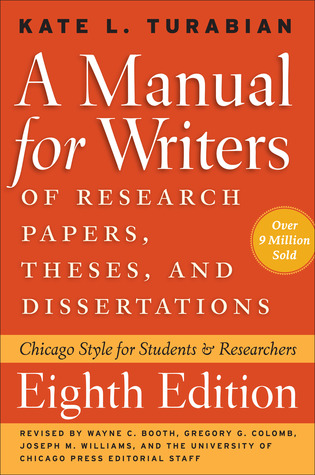Turabian Citation Resources
-
Chicago Manual of Style OnlineMore detailed information about Turabian style.
-
Differences Between Chicago & TurabianChicago & Turabian are nearly identical. Please see the Chicago Manual of Style online, linked above.
-
RefWorks AccountUse your free account to form citations. Export sources from Primo, then "Import." Check for errors.
Two Types of Turabian
Turabian citation offers two different forms of in-text citation, using either footnotes or parentheses.
Generally, humanities subjects like theology and history use footnotes, while sciences use parentheses.
- Notes-Bibliography Style -- a.k.a Humanities; Footnotes; Endnotes (Ch. 16-17 in A Manual for Writers)
- Author-Date Style -- a.k.a Parenthetical; Reference List (Ch. 18-19 in A Manual for Writers)
What is the difference between the two?
Notes-Bibliography uses footnotes. A footnote for a book looks like this:
1. Malcolm Gladwell, The Tipping Point: How Little Things Can Make a Big Difference (Boston: Little, Brown, 2000), 64–65.
Or, shortened form:
2. Gladwell, Tipping Point, 71.
Author-Date cites in parentheses at the end of a sentence, not in a footnote, and it looks like this:
(Gladwell 2000, 64–65)
Differences between the two styles in the bibliography at the end of your paper:
Notes-Bibliography puts the year at the end of the publication information, like this:
Gladwell, Malcolm. The Tipping Point: How Little Things Can Make a Big Difference. Boston: Little, Brown, 2000.
Author-Date puts the year right before the title, like this:
Gladwell, Malcolm. 2000. The Tipping Point: How Little Things Can Make a Big Difference. Boston: Little, Brown.
Turabian Manual
-
 A Manual for Writers of Research Papers, Theses, and Dissertations
by
Call Number: LB2369 .T8 2013Publication Date: 20188th Edition
A Manual for Writers of Research Papers, Theses, and Dissertations
by
Call Number: LB2369 .T8 2013Publication Date: 20188th Edition
The library owns this book in paper form.
Copies available for check out, in reference, and on reserves at the resource desk.
Writing Theology Papers
-
Your guide to writing quality research papers: For students of religion and theology by
Call Number: BL41 .V94 2014Publication Date: 2014